Lay of the land: surveying the creative expanses of Provence’s Château la Coste

Depending on your predilection, Château la Coste, located a little north of Aix-en-Provence, is either an estimable winemaker with a sideline in contemporary art or a marvel of modern architecture with an open-air gallery that just happens to have a vineyard attached. Whatever the case, the 200-acre estate owned by Irish property magnate Paddy McKillen is hugely impressive, a contemporary bedfellow to properties like Chatsworth in Derbyshire and Désert de Retz in Chambourcy.
McKillen’s ownership of la Coste began in 2002, after which he started installing art and architecture (both extant and commissioned) in response to the landscape and its winemaking history. A weighty book, titled, simply, Château la Coste, documents the recent history of the site in detail. It’s a beast: a 350-page volume crammed with sumptuous photography, contextual essays, diagrams and ephemera – self-congratulatory, perhaps, but deservingly so. There’s clearly been no expense spared: aside from the literal weight of the thing, the production values are notable, flitting between paper stocks and finishes, with supplementary pamphlet-style inserts on light, technical papers and loose single photographs and notebooks tucked inside each cover.
Following a preamble interview with McKillen and a florid introductory essay, a booklet of structural schematics gives immediate insight into the workings of the starchitects who've shaped la Coste, from spectral renders by Tadao Ando and Oscar Niemeyer to the more formal and meticulous diagrams of Richard Rogers and Renzo Piano (Jean Nouvel’s contributions are something of a mix).
One substantial photo section comprises artful, high-gloss shots of the site, its buildings and interventions. Many are straight-up architectural images; some are ostensibly bucolic landscapes. Others are more abstract and geometric, dare I say, Instagrammy: roof panels, piles of logs, waves of corrugated steel, that kind of thing. Captions are kept to the break pages, so flicking through these images feels like a meditative, meandering journey through the Château grounds, unencumbered by such fripperies as context and information. All are unpeopled (there’s a separate booklet with candid portraits of visitors and staff).

The variety and scope of the artworks and architectural installations across the estate afford the grounds a surreal quality. Pictured, Frank Gehry’s Music Pavilion
Picking through the meat of the book – 200-odd pages of photography and profile text on each artwork and structure – is an exhaustive undertaking. Even choosing highlights is nigh on impossible, given McKillen’s curatorial nous (and, we have to assume, expansive budget). The work is all fairly startling, from Ando’s minimalist entry portal right through to the Château's kitchen garden.
Along the way, we’re treated to Hiroshi Sugimoto’s Mathematical Model 012, an example of the artist’s ‘science sculptures’; it rises from a shallow pool outside Ando’s Art Centre into an infinitesimal needle-point, positioned towards the firmament. Nearby, Alexander Calder’s primary-coloured Small Crinkly mobile shifts in the breeze. Embedded into a hillside across the estate is Andy Goldsworthy’s Oak Room, a haunting architectural installation responding to the topography (Goldsworthy is often creatively aligned with Land Artists like Richard Long). Though inconspicuous from the outside, its shadowy subterranean expanse is truly eerie, constructed from heavy, bare branches, dense and nest-like – not unlike True Detective’s Carcosa tunnels, if that’s your thing.
Elsewhere, Tracey Emin’s Self Portrait, Cat Inside a Barrel is a steel lookout platform sat between trees, a barrel containing a cat figurine featured at its tallest point. American sculptor Richard Serra has installed sheets of industrial steel into a hillside in his work Aix. And Tatsuo Miyajima has created a nocturnal LED work, bright pinpricks of green light appearing like fireflies as the sun fades (it’s dubbed Wild Flowers).
Even the most functional buildings are highly striking – particularly Frank Gehry’s angular, abstract Music Pavilion, seemingly constructed from a rough web of beams and girders, and Nouvel’s sheer, bunker-like wineries.
It’s a lot to take in, even in book form, but relentlessly intriguing as a snapshot of the upper echelons of late 20th- and early 21st-century sculpture and building. In the opening interview McKillen sums it up succinctly: ‘Château la Coste provides a beautiful context with a tremendous freedom to dream.’ By affording creative freedom to such an esteemed group of visionaries, he says, something rather special has been created. We’re inclined to agree.

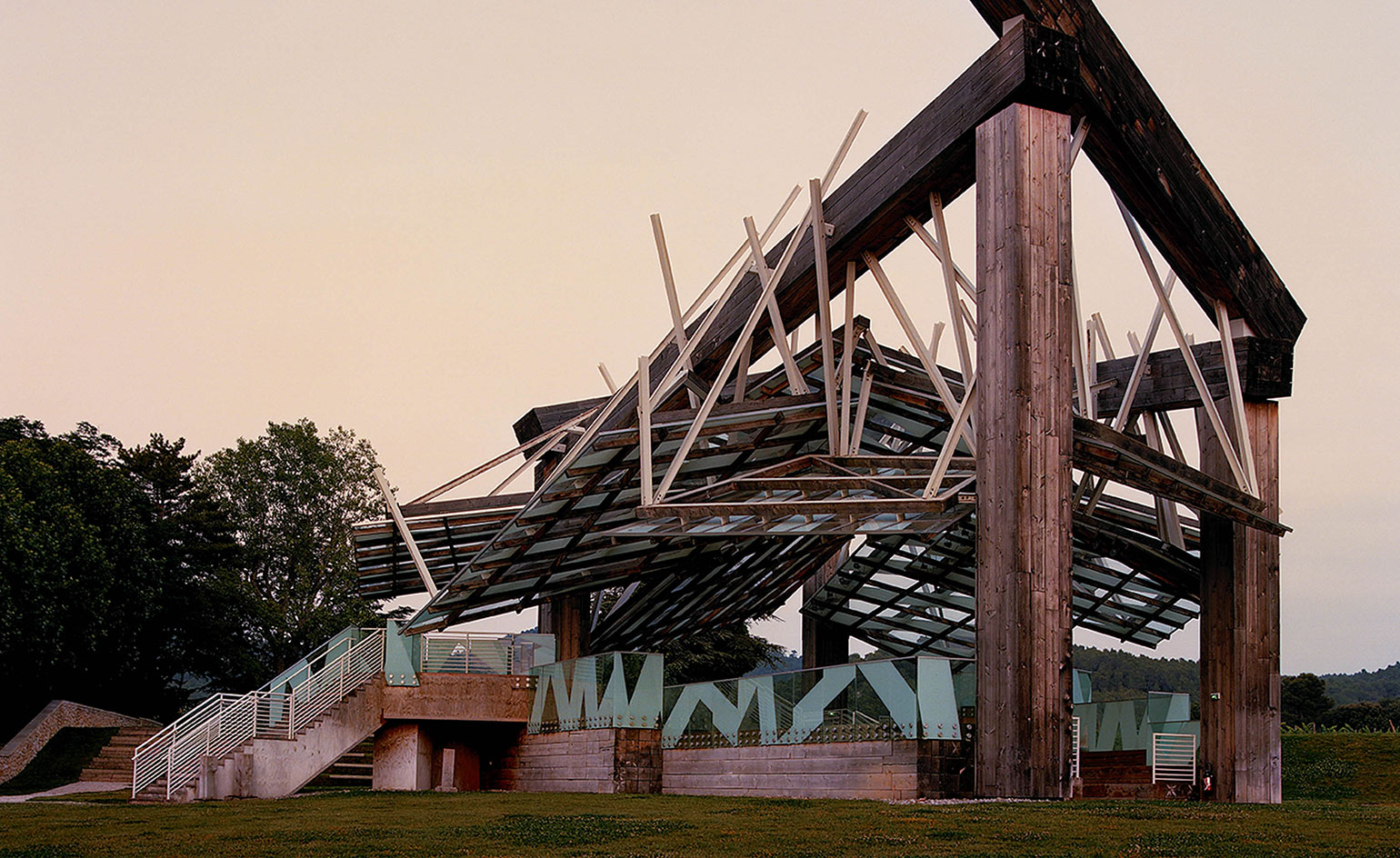
Gehry's pavilion is seemingly constructed from a rough web of beams and girders
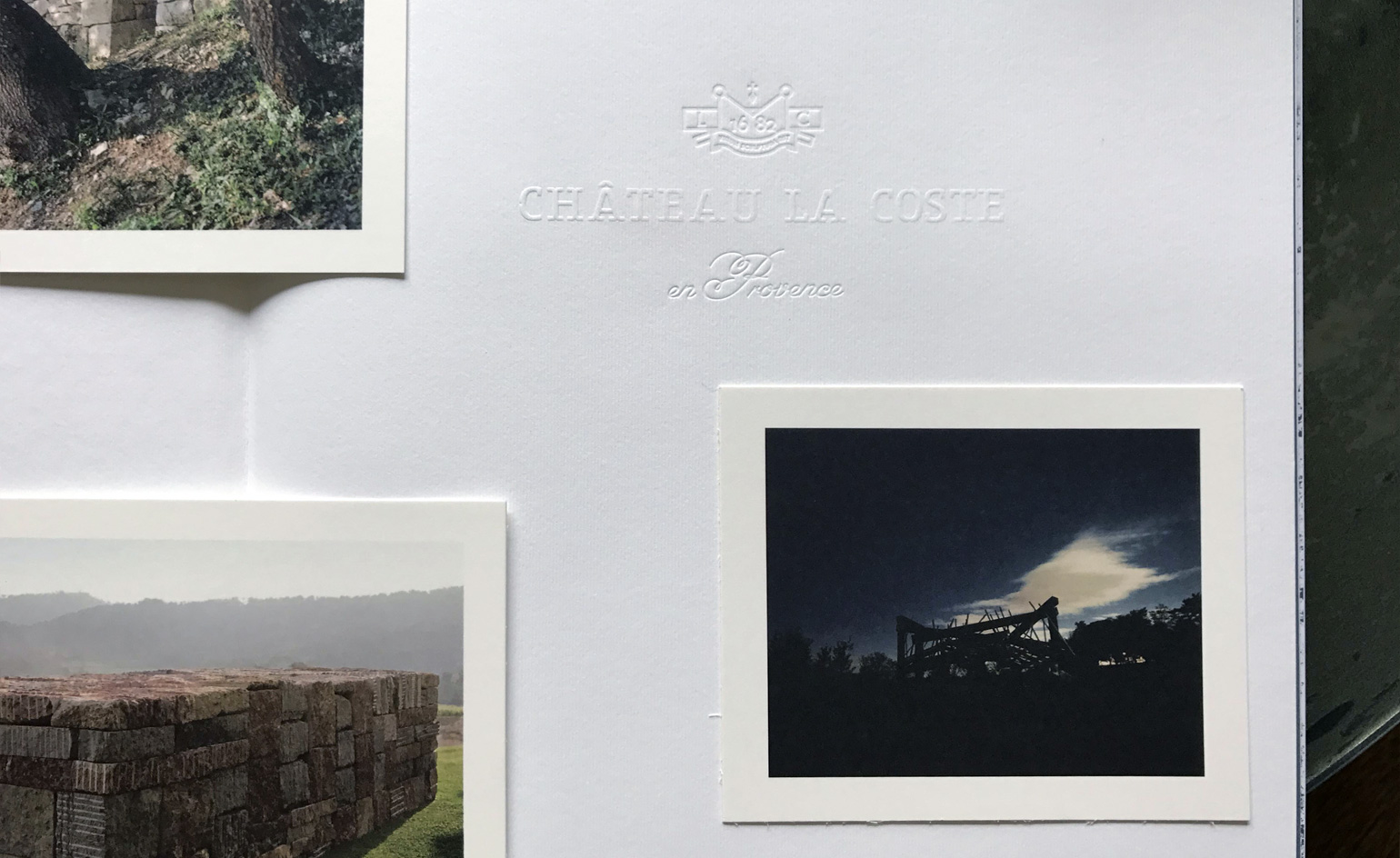
The production values are notable, with loose single photographs are tucked into the cover
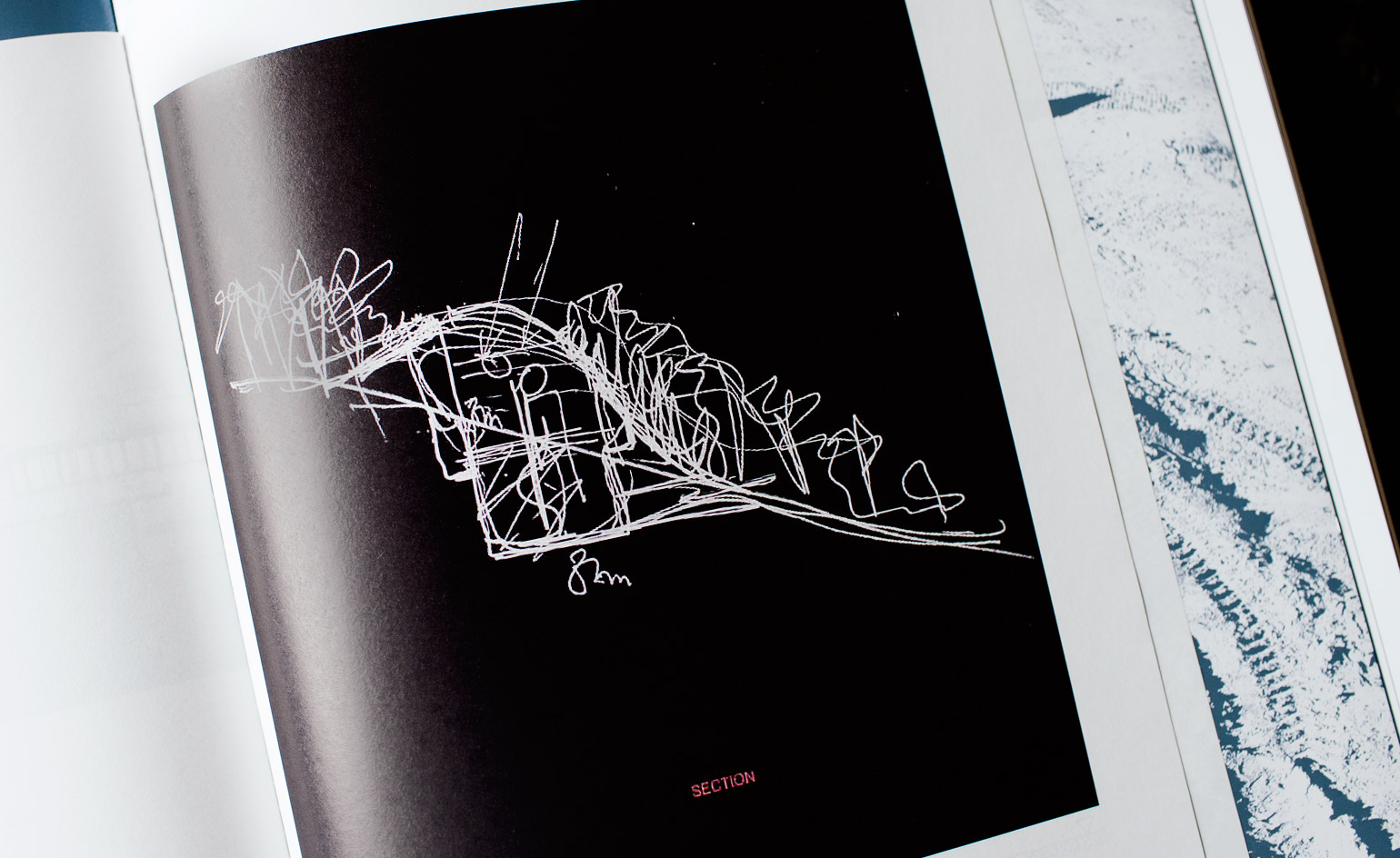
I do, I undo, I redo, by Louise Bourgeois, as sketched by Jean Nouvel
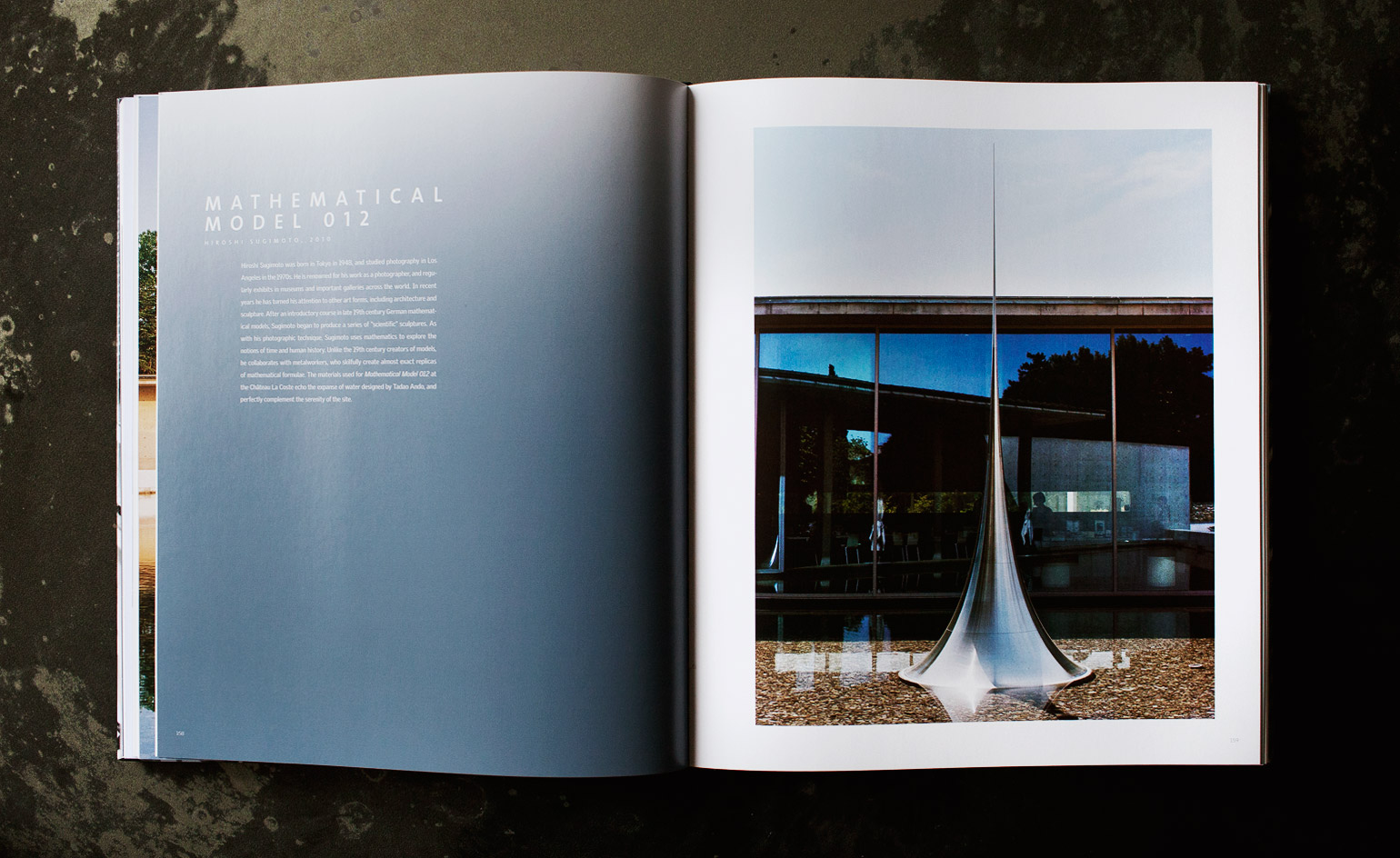
Mathematical Model 012, by Hiroshi Sugimoto, 2010
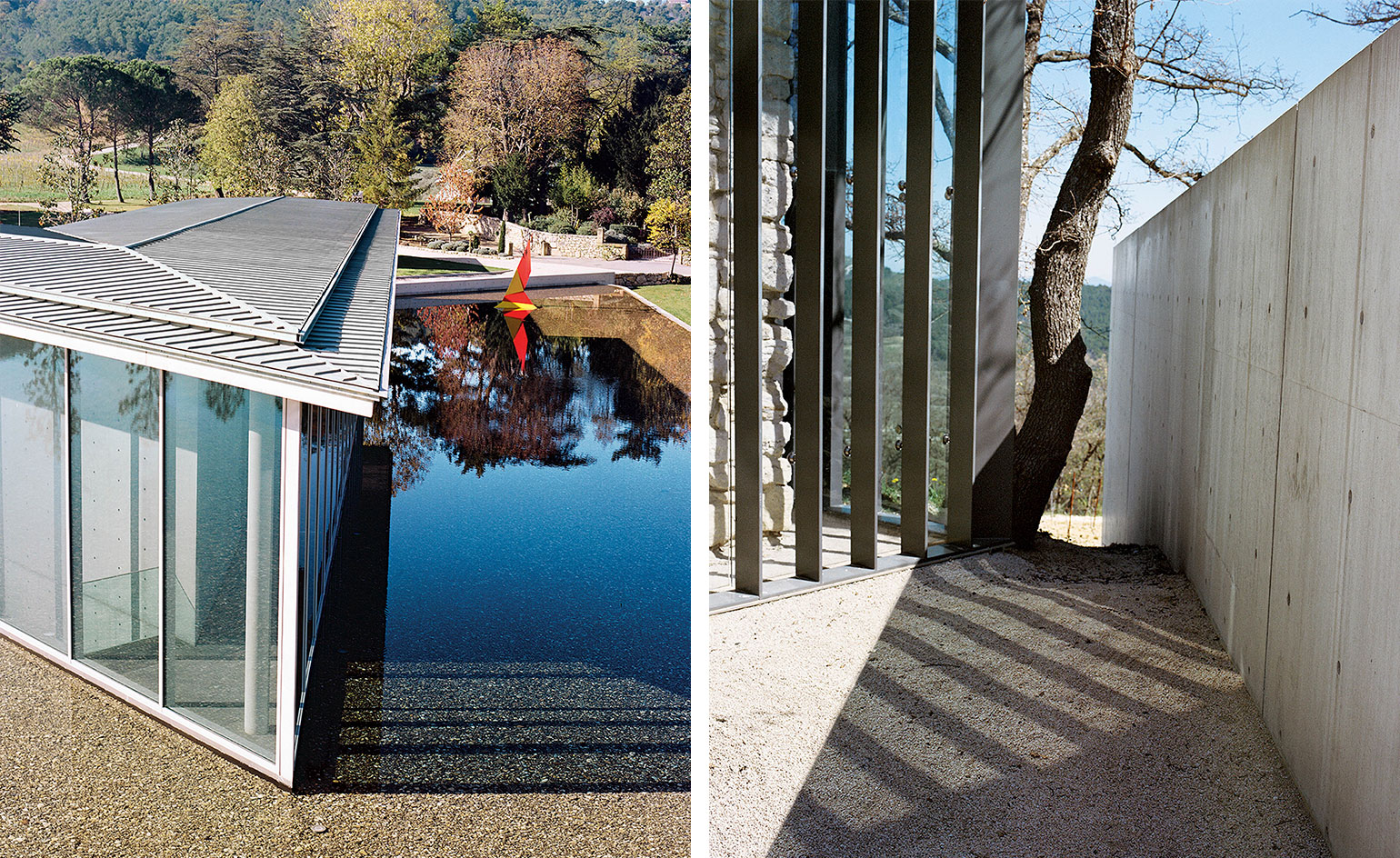
Different views of Tadao Ando's angular and minimalist art centre, with its shallow pool

A view of Ando's art centre, with Alexander Calder's Small Crinkly (1976) mobile visible to the left

There is no single route..., part of the photo-story of the grounds, by Simon Schwyzer

Château la Coste explores the rich creative history of the provençale vineyard and contemporary art destination, owned by Irish property magnate Paddy McKillen

Jean Nouvel created a number of sheer, hangar-style wineries for the estate

A separate booklet captures the human side of the estate, with candid portraits of visitors and staff

Château la Coste owner Paddy McKillen began to install art and architecture in response to the landscape and its winemaking history after purchasing the estate in 2002
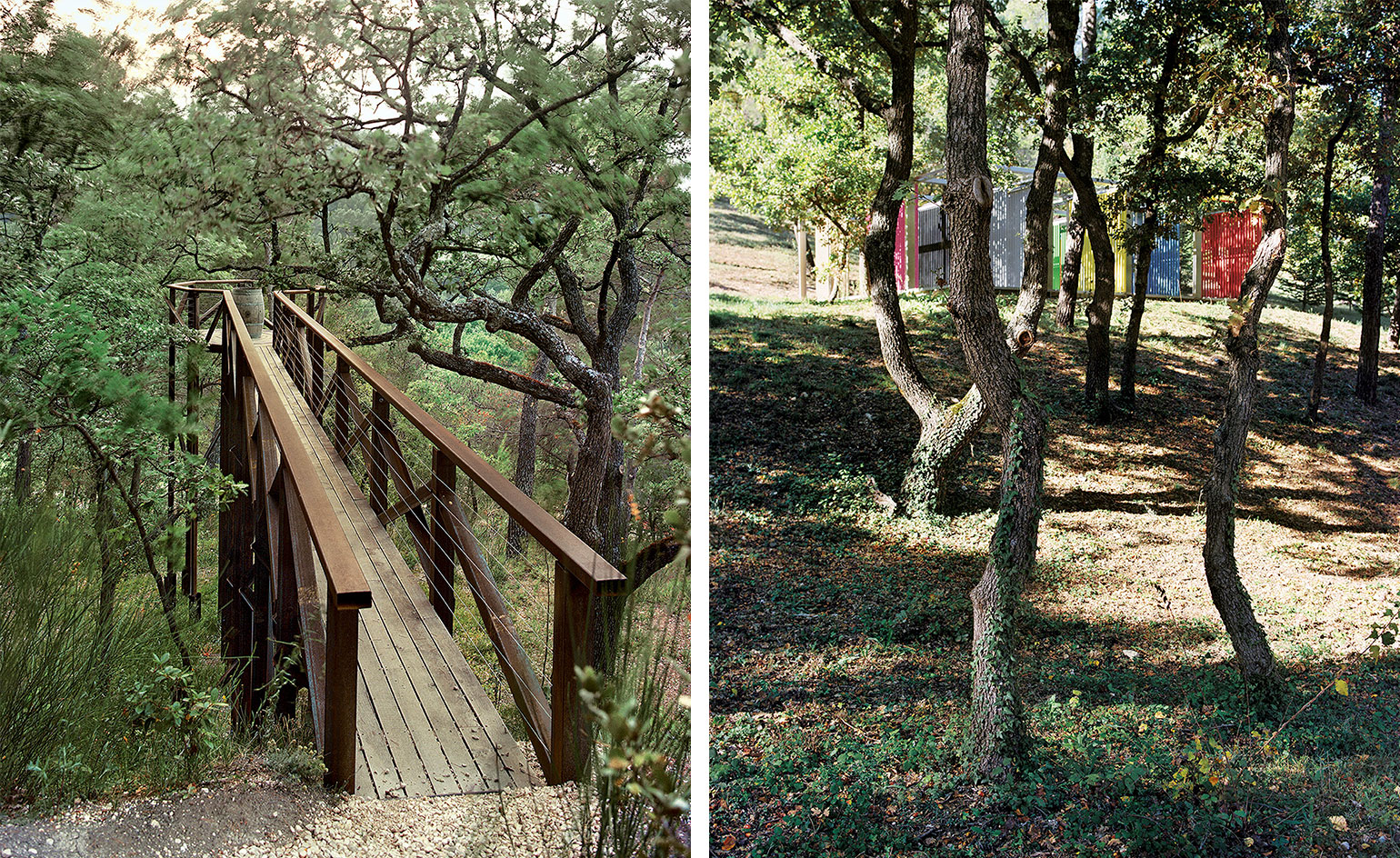
Left, Tracey Emin's Self Portrait, Cat Inside a Barrel (2013) features a barrel containing a cat figurine, at the highest point of a steel lookout platform. Right, Liam Gillick's Multiplied Resistance Screened, 2010, visible through the groves

La Grande Croix Rouge, by Jean-Michel Othoniel, 2007-2008
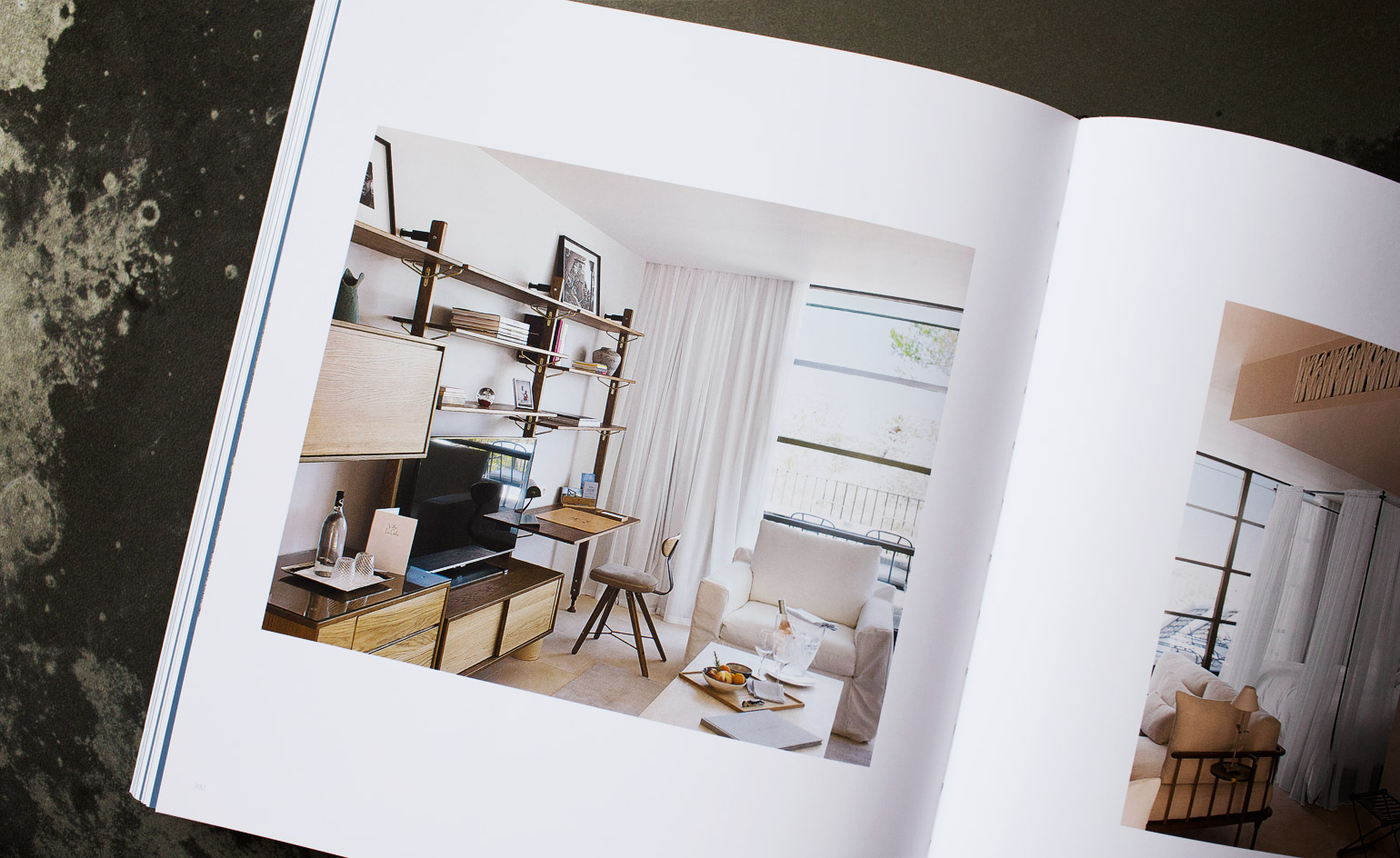
Interiors of the Andre Fu-designed Villa La Coste hotel, built in 2016
Receive our daily digest of inspiration, escapism and design stories from around the world direct to your inbox.
Tom Howells is a London-based food journalist and editor. He’s written for Vogue, Waitrose Food, the Financial Times, The Fence, World of Interiors, Time Out and The Guardian, among others. His new book, An Opinionated Guide to London Wine, will be published by Hoxton Mini Press later this year.
-
 Explore the work of Jean Prouvé, a rebel advocating architecture for the people
Explore the work of Jean Prouvé, a rebel advocating architecture for the peopleFrench architect Jean Prouvé was an important modernist proponent for prefabrication; we deep dive into his remarkable, innovative designs through our ultimate guide to his work
-
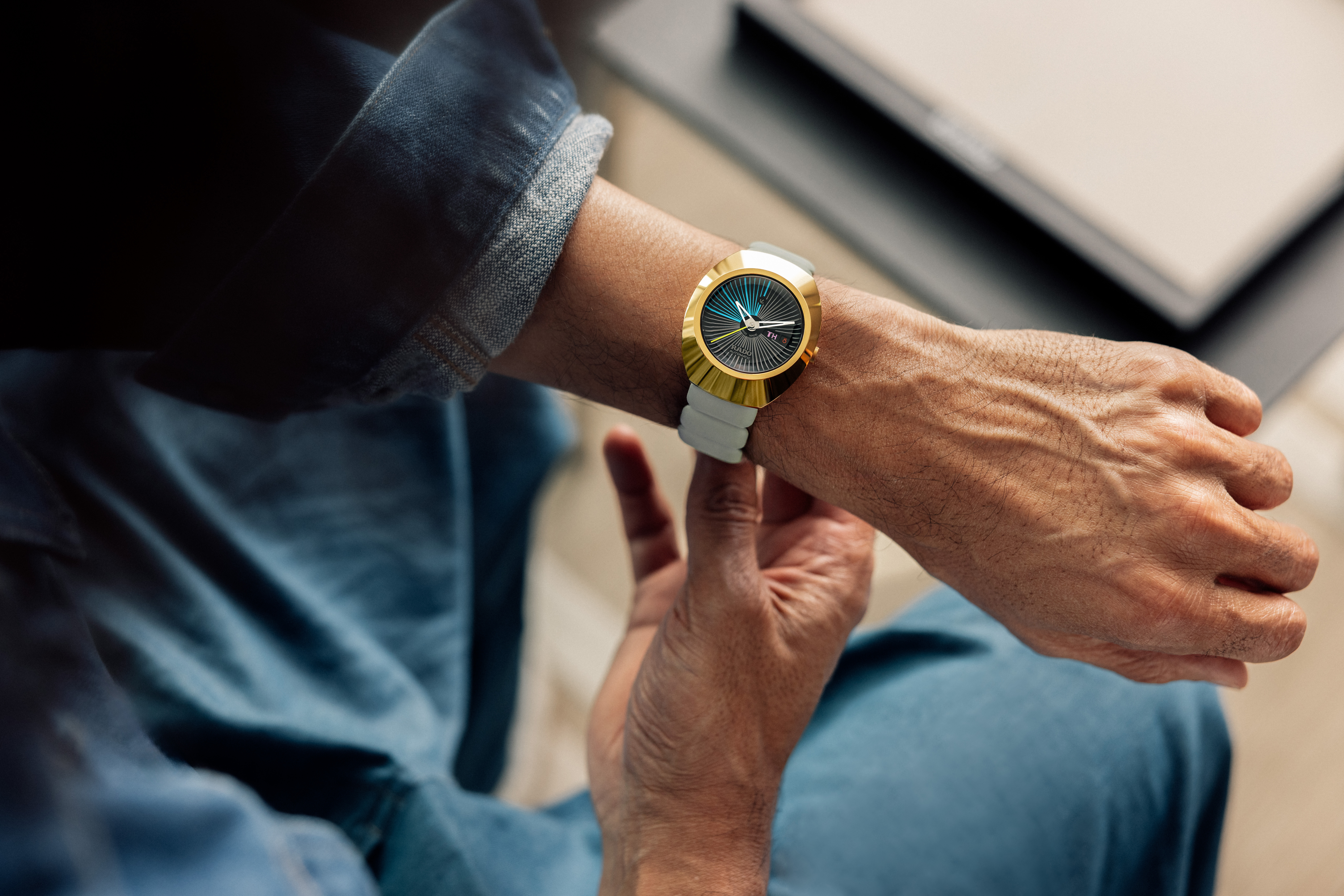 'I wanted to create an object that invited you to interact': Tej Chauhan on his Rado watch design
'I wanted to create an object that invited you to interact': Tej Chauhan on his Rado watch designDiastar Original which Rado first released in 1962 has become synonymous with elegant comfort and effortless display of taste. Tej Chauhan reconsiders its signature silhouette and texture on the intersection of innovation and heritage
-
 High in the Giant Mountains, this new chalet by edit! architects is perfect for snowy sojourns
High in the Giant Mountains, this new chalet by edit! architects is perfect for snowy sojournsIn the Czech Republic, Na Kukačkách is an elegant upgrade of the region's traditional chalet typology
-
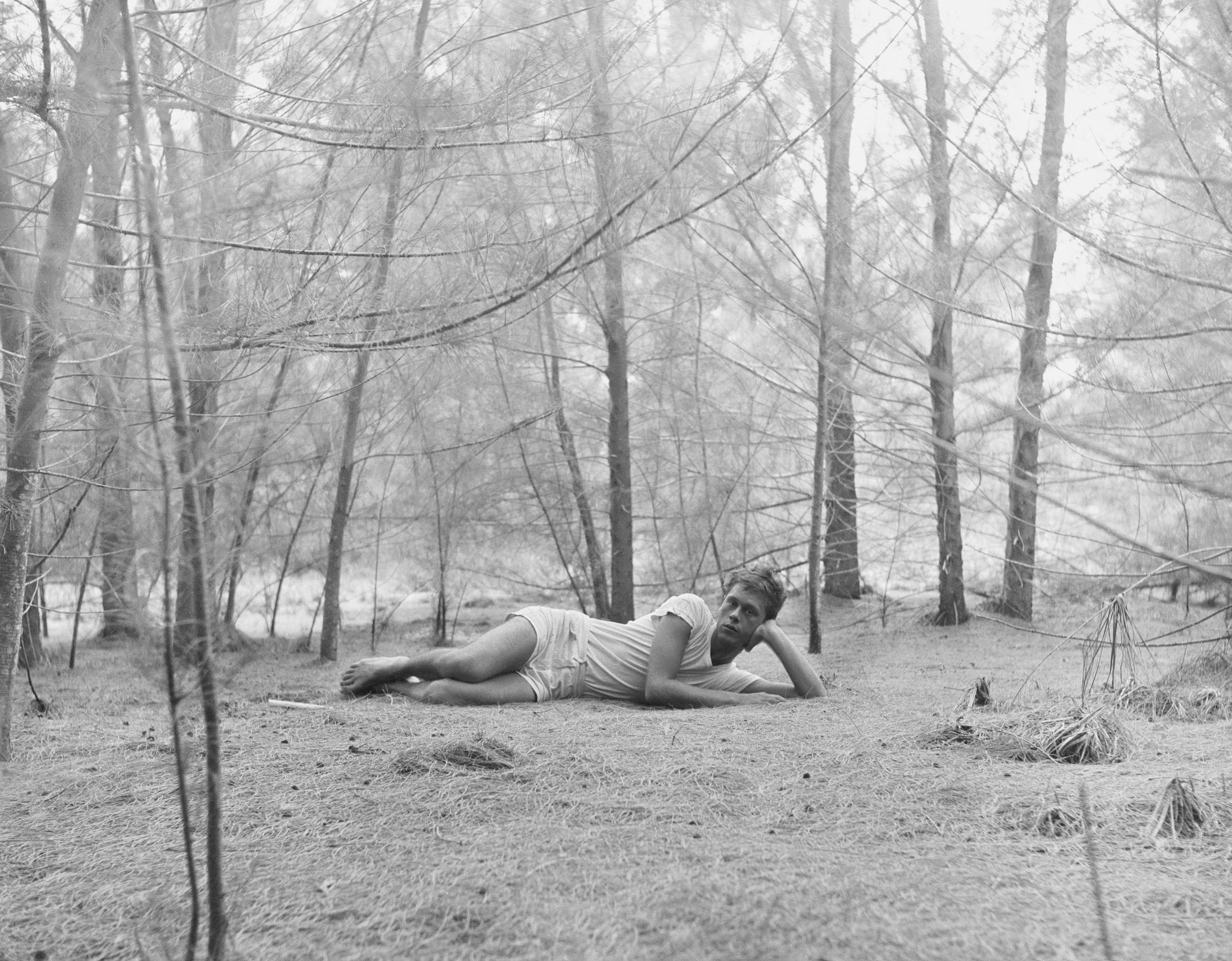 Inside the seductive and mischievous relationship between Paul Thek and Peter Hujar
Inside the seductive and mischievous relationship between Paul Thek and Peter HujarUntil now, little has been known about the deep friendship between artist Thek and photographer Hujar, something set to change with the release of their previously unpublished letters and photographs
-
 Nadia Lee Cohen distils a distant American memory into an unflinching new photo book
Nadia Lee Cohen distils a distant American memory into an unflinching new photo book‘Holy Ohio’ documents the British photographer and filmmaker’s personal journey as she reconnects with distant family and her earliest American memories
-
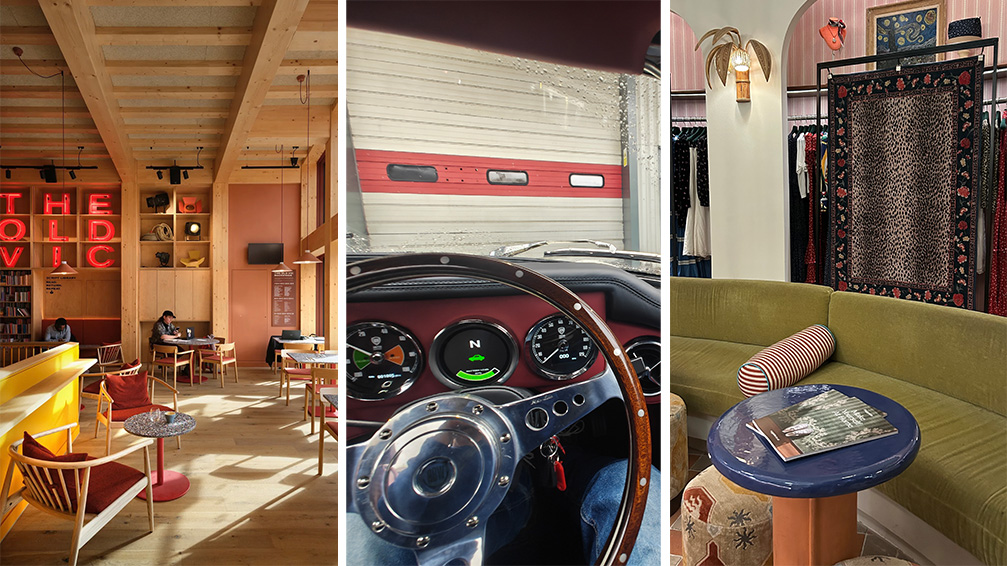 Out of office: The Wallpaper* editors’ picks of the week
Out of office: The Wallpaper* editors’ picks of the weekThe rain is falling, the nights are closing in, and it’s still a bit too early to get excited for Christmas, but this week, the Wallpaper* team brought warmth to the gloom with cosy interiors, good books, and a Hebridean dram
-
 Inside Davé, Polaroids from a little-known Paris hotspot where the A-list played
Inside Davé, Polaroids from a little-known Paris hotspot where the A-list playedChinese restaurant Davé drew in A-list celebrities for three decades. What happened behind closed doors? A new book of Polaroids looks back
-
 Inside the process of creating the one-of-a-kind book edition gifted to the Booker Prize shortlisted authors
Inside the process of creating the one-of-a-kind book edition gifted to the Booker Prize shortlisted authorsFor over 30 years each work on the Booker Prize shortlist are assigned an artisan bookbinder to produce a one-off edition for the author. We meet one of the artists behind this year’s creations
-
 Out of office: The Wallpaper* editors’ picks of the week
Out of office: The Wallpaper* editors’ picks of the weekThis week, the Wallpaper* editors curated a diverse mix of experiences, from meeting diamond entrepreneurs and exploring perfume exhibitions to indulging in the the spectacle of a Middle Eastern Christmas
-
 14 of the best new books for music buffs
14 of the best new books for music buffsFrom music-making tech to NME cover stars, portable turntables and the story behind industry legends – new books about the culture and craft of recorded sound
-
 Jamel Shabazz’s photographs are a love letter to Prospect Park
Jamel Shabazz’s photographs are a love letter to Prospect ParkIn a new book, ‘Prospect Park: Photographs of a Brooklyn Oasis, 1980 to 2025’, Jamel Shabazz discovers a warmer side of human nature